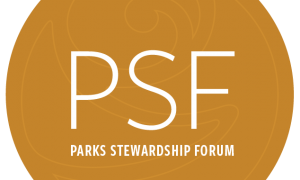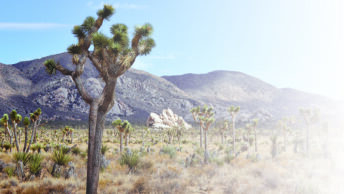Moses Chun
In the short time I’ve been a professional in conservation, collaborative skills and their place in modern land management have risen as a prominent need in the work we do. Despite the organizational structures and institutional cultures that can inhibit speed, inclusion, and innovation, I see leaders who understand that we must collaborate as individuals and groups to create a thriving environment.
With each passing day, we are realizing that there is far too little time to coordinate isolated efforts to address the existential threat of climate change. Any response to these threats should be rapid, but designing Jonathan B. Jarvis’s proposal for climate-resilient landscapes is a complex task. It will be the synthesis of all we know about nature and our impacts on the environment. To some, complicating this objective with multiple partners may seem time-consuming and inefficient. However, I believe that through collaboration we can quickly design solutions that utilize the entirety of our expertise and knowledge. Like our own brains that work as neural networks, a united network of collaborators can quickly understand the multidisciplinary challenges we face and promptly mobilize action.
Designing climate resilience will also require collaboration to ensure that the outcomes benefit everyone. Without it, we risk excluding entire communities of all geographies, interests, circumstances, and cultures. We must design solutions that appreciate multiple perspectives and their own special connections to nature. The narrative of the Anthropocene must shift toward reconciliation of not only human impacts on biodiversity, but also the painful history of harms to people across the globe. Collaborative models of design will engage and empower communities toward realizing Jarvis’s vision of “a more peaceful, equitable, and cooperative planet.”
If the longstanding concept of protected areas as sufficient means of conservation is not viable, we look toward strengthening landscapes to be resilient. The task of designing, implementing, and managing such a future sounds like a monumental goal, if not an impossible one. But innovation often changes the way we perceive our challenges and gives us the tools to rise above them. And so, our conservation culture must see how working together provides opportunities that we cannot find alone. The positive impacts of collaborative skills are magnified through the creativity birthed from leadership that celebrates diversity and partnership.
Jarvis presents a compelling case for why we must collaborate. Swift, inclusive, and creative action requires everyone working in accord. As the origin of the word “collaboration” suggests, we simply labor together. It demands that all citizens of the world see themselves as leaders, not only for their individual potential, but to increase their ability to work with neighbors to enact regional, societal, and planetary change. Furthermore, the success in our endeavors hinges on our tenacity in the face of myriad failures. Our unified persistence must emulate the resilience we hope to design for our planet. Altogether, with a spirit of collaboration, I believe we can rise to meet the challenge of climate change.
Moses Chun is a program specialist with the National Park Service’s Stewardship Institute, located at Marsh–Billings–Rockefeller National Historical Park. An alum of the University of California Merced and the Yosemite Leadership Program, he advocates for interdisciplinary and collaborative leadership in conservation.
Moses Chun
National Park Service, Stewardship Institute
54 Elm St.
Woodstock, VT 05091
moses_chun@nps.gov





